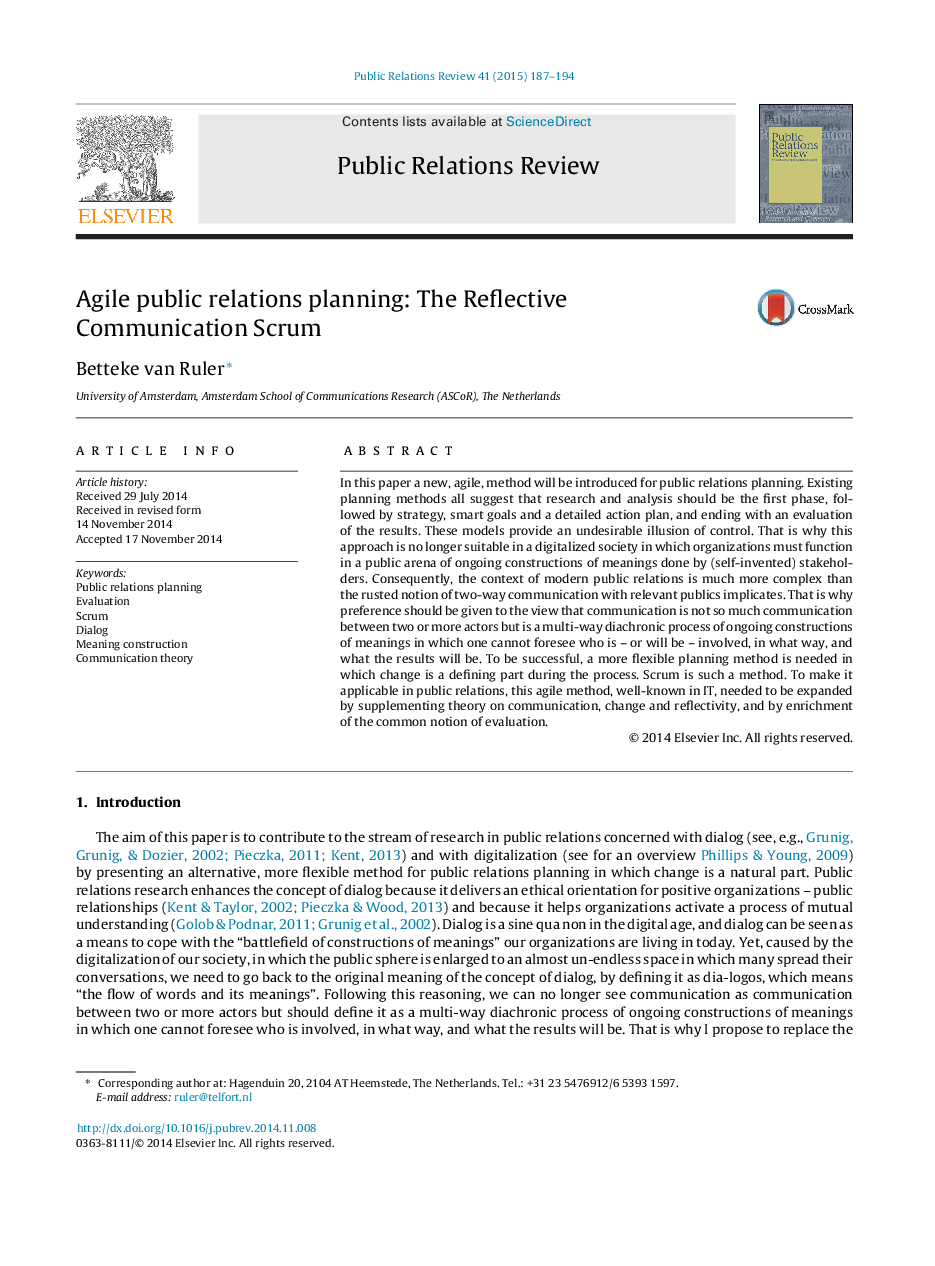| کد مقاله | کد نشریه | سال انتشار | مقاله انگلیسی | نسخه تمام متن |
|---|---|---|---|---|
| 138893 | 162476 | 2015 | 8 صفحه PDF | دانلود رایگان |
• Today, organizations live in a public arena of ongoing constructions of meanings.
• To cope with this arena, public relations planning needs to be agile and adaptive.
• Existing public relations planning methods see change as an obstacle for delivering predefined results.
• This urges for a view of communication as a multi-way diachronic process of ongoing meaning constructions.
• Scrum is a strong instrument to become a reflective practitioner, able to adapt to change.
In this paper a new, agile, method will be introduced for public relations planning. Existing planning methods all suggest that research and analysis should be the first phase, followed by strategy, smart goals and a detailed action plan, and ending with an evaluation of the results. These models provide an undesirable illusion of control. That is why this approach is no longer suitable in a digitalized society in which organizations must function in a public arena of ongoing constructions of meanings done by (self-invented) stakeholders. Consequently, the context of modern public relations is much more complex than the rusted notion of two-way communication with relevant publics implicates. That is why preference should be given to the view that communication is not so much communication between two or more actors but is a multi-way diachronic process of ongoing constructions of meanings in which one cannot foresee who is – or will be – involved, in what way, and what the results will be. To be successful, a more flexible planning method is needed in which change is a defining part during the process. Scrum is such a method. To make it applicable in public relations, this agile method, well-known in IT, needed to be expanded by supplementing theory on communication, change and reflectivity, and by enrichment of the common notion of evaluation.
Figure optionsDownload as PowerPoint slide
Journal: Public Relations Review - Volume 41, Issue 2, June 2015, Pages 187–194
